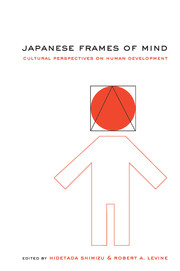Book contents
- Frontmatter
- Contents
- Notes on the Contributors
- Preface: Japan as Front Line in the Cultural Psychology Wars
- Introduction: Japanese Cultural Psychology and Empathic Understanding: Implications for Academic and Cultural Psychology
- PART ONE MORAL SCRIPTS AND REASONING
- PART TWO MOTHER AND CHILD AT HOME
- PART THREE GROUP LIFE: THE YOUNG CHILD IN PRESCHOOL AND SCHOOL
- PART FOUR ADOLESCENT EXPERIENCE
- 7 Beyond Individualism and Sociocentrism: An Ontological Analysis of the Opposing Elements in Personal Experiences of Japanese Adolescents
- 8 Returnees to Japan: The Impact of Having Lived in the United States
- PART FIVE REFLECTIONS
- Index
8 - Returnees to Japan: The Impact of Having Lived in the United States
Published online by Cambridge University Press: 23 July 2009
- Frontmatter
- Contents
- Notes on the Contributors
- Preface: Japan as Front Line in the Cultural Psychology Wars
- Introduction: Japanese Cultural Psychology and Empathic Understanding: Implications for Academic and Cultural Psychology
- PART ONE MORAL SCRIPTS AND REASONING
- PART TWO MOTHER AND CHILD AT HOME
- PART THREE GROUP LIFE: THE YOUNG CHILD IN PRESCHOOL AND SCHOOL
- PART FOUR ADOLESCENT EXPERIENCE
- 7 Beyond Individualism and Sociocentrism: An Ontological Analysis of the Opposing Elements in Personal Experiences of Japanese Adolescents
- 8 Returnees to Japan: The Impact of Having Lived in the United States
- PART FIVE REFLECTIONS
- Index
Summary
The word kikokushijo (“Returnees”) arouses anxiety in Japan, due to the long-standing stigma attached to Japanese children who have lived abroad (Goodman, 1990; Kondo, 1989; Miyachi, 1990; Monbusho Kyoiku Josei Kyoiku, 1991; White, 1988). The stigma stems from being an “outsider” or not belonging to “the group.” Japanese teachers, returnee parents, returnee students, and nonreturnee students have a negative image of the “returnee,” but for different reasons. The Japanese teacher may draw on previous experiences of kikokushijo students, hesitantly admitting that it is difficult to teach a class with a kikokushijo in it because of their outspoken behavior. The returnee parents may be anxiety-ridden because they know of this stigma and are afraid that even if their child thinks he is acting and reacting like a Japanese, neighbors will find something strange about his behavior. They also fear that their children will not be accepted in the school environment. Merry White (1988) describes how the returned women in her study were under great pressure to avoid stigma and to observe the strict rules of a Japanese “housewife” and “mother” in order to set an example for the rest of the family to conform to these social norms. This would ultimately reflect on her children and husband's status in the school, community, and job.
The anxieties of the kikokushijo resemble those of their parents. They are concerned about being accepted into the peer group.
- Type
- Chapter
- Information
- Japanese Frames of MindCultural Perspectives on Human Development, pp. 228 - 254Publisher: Cambridge University PressPrint publication year: 2002

